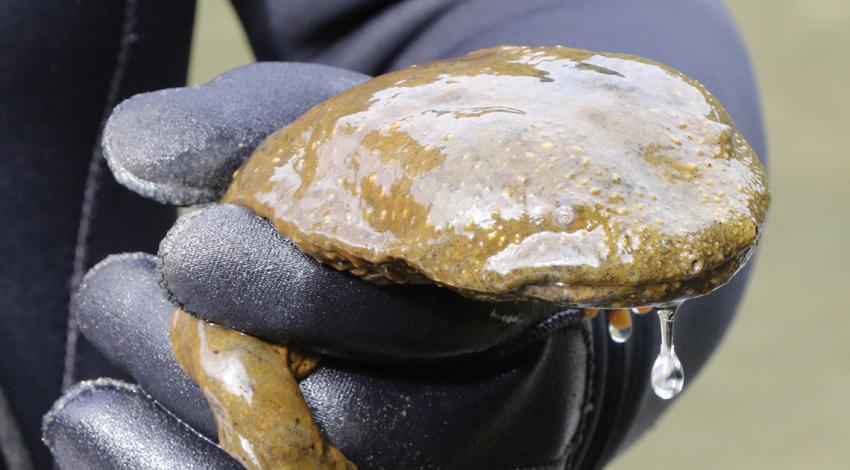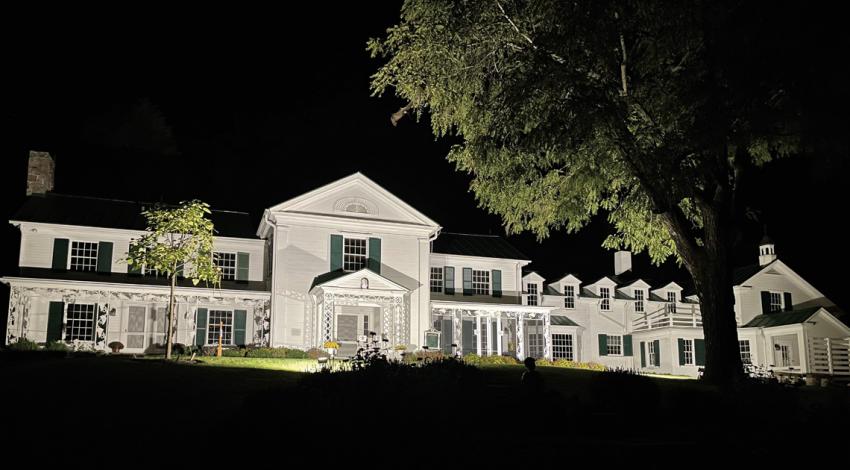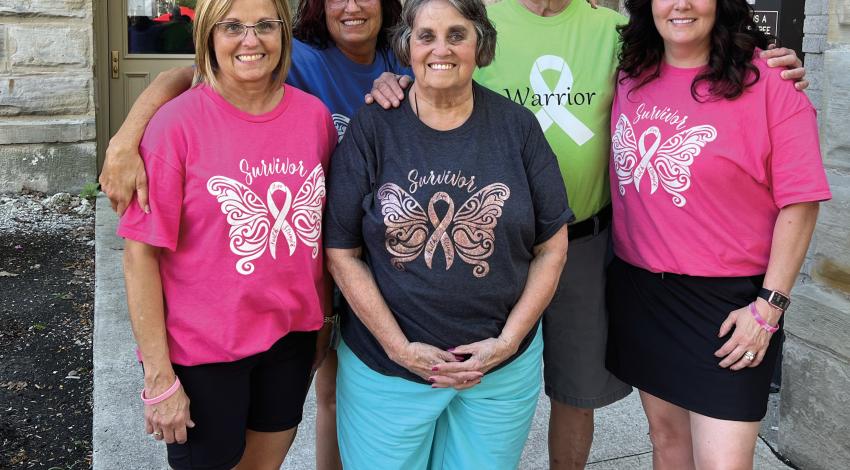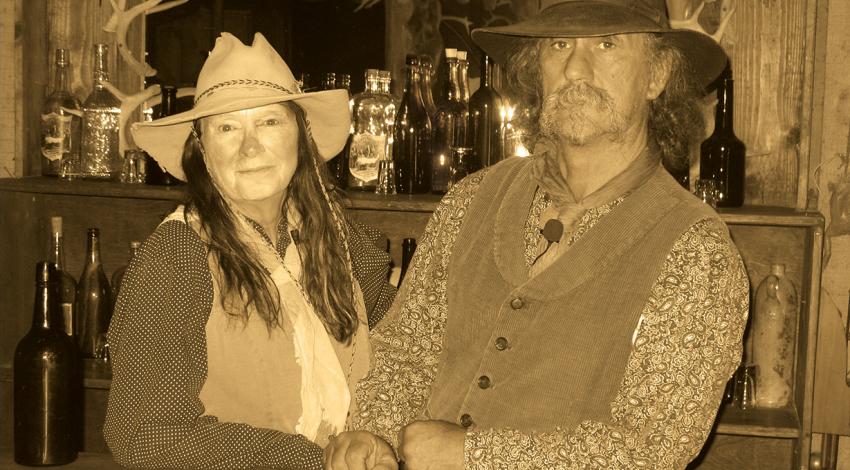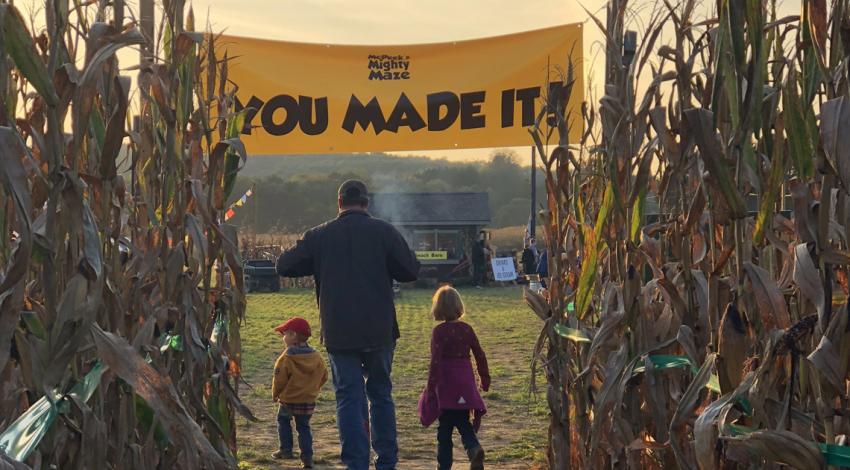Herpetologist Greg Lipps, standing knee-deep in the Kokosing River in Knox County, lifts the side of a large, flat rock and tilts it up on edge. As the swirling mud below slowly clears, he stares intently into the water.
No one seems to know for sure how or where the name “hellbender” came from. One theory claims that this docile, harmless salamander was named by early American settlers who thought it so ugly, “it was a creature from hell where it’s bent on returning.” Other common names for Cryptobranchus alleganiensis include devil dog, mud dog, water dog, and grampus. My personal favorite — for the disgusted reaction it triggers — is “snot otter,” describing the heavy coating of mucus that covers the creature’s wrinkled, mottled-brown skin.
Just over a rise in scenic Richland County, Malabar Farm appears in the distance — a stately, historic (and sprawling) main house, rolling hills and fields, and an inviting white barn with horses grazing nearby.
The rural setting conjures up plenty of other eerie lore, cemented in long-dead legends and myths. As a matter of fact, Malabar Farm — now an Ohio state park — has been called one of the 10 most haunted places in America. That’s why park naturalists are resurrecting the popular Haunted Hikes this month: creepy, outdoor explorations of ghostly tales and whispered legends shared on three autumn Sundays.
More so than ever, public policies — more specifically, government policies — are driving energy prices, choices, and availability. We have experienced a dramatic run-up in the price of every form of energy in less than a year’s time. We continue to witness both actual blackouts and near misses on a more regular basis. Electric cooperatives across the United States and here in Ohio represent less than 10% of the electric industry, but we continue to be among the strongest advocates for reliable, affordable, always-available electricity systems.
One in eight women will be diagnosed with breast cancer during their lifetime.
Pink Ribbon Girls serves five regions: Dayton, Cincinnati, and Columbus in Ohio; St. Louis, Missouri; and the Bay Area in California. The organization’s sights are set on expanding their reach to other regions throughout the country, to ensure that no one has to battle breast or gynecological cancers alone.
As Hohenstein can attest, breast cancer affects more than the individual — it affects the entire family.
Mosey down a dirt street, browse through old-time shops, watch a Wild West shootout, or belly up to the saloon bar for a cold sarsaparilla. You can do it all at Dogwood Pass near Beaver in rural Pike County.
The saloon came first in 2010, and today more than 30 buildings occupy a 2-acre tract at the Montgomery farm. There’s a general store, a jail, a bank, a photography studio complete with vintage costumes, an undertaker, a shooting gallery, a blacksmith shop, a combination church/school, Boot Hill cemetery, and the Montgomery Mining Company, where young and old alike can mine for gems on certain days.
Ohioans head to the voting booth Nov. 8 for one of the most consequential midterm elections in recent memory. Among the many significant decisions voters must make is who will lead the state’s executive branch as governor for the next four years.
If elected in November, what will be the issues of highest priority for your administration?
Mike DeWine: We must bring economic prosperity and hope to every part of Ohio. We must improve our economic development efforts in Ohio and focus on every part of the state. To succeed in a tech-focused economy, we are investing substantially in career education, job training, and workforce development. We are closing the digital divide so that all Ohioans have access to high-speed internet services, which will create opportunity for generations.
As viewed from above, some corn mazes are complicated labyrinths of intricate, themed designs. Whether they’re looking for a challenge or just an autumn atmosphere, enthusiasts of all ages are attracted to corn mazes.
McPeek’s Mighty Maze and Fall Festival
Located at the Coshocton KOA Holiday in Coshocton, the Mighty Maze is a part of the fall festival held by Ryan and Camille McPeek. Employee Amy Hamilton says they plant the corn like normal, and the maze is cut with a tractor and a GPS device.
Do mazers ever get lost?
“Some do need help,” she says, noting that guides are always available. Before closing each evening, employees sweep through the maze, looking for stragglers.
“We leave no man behind,” Hamilton jokes.
